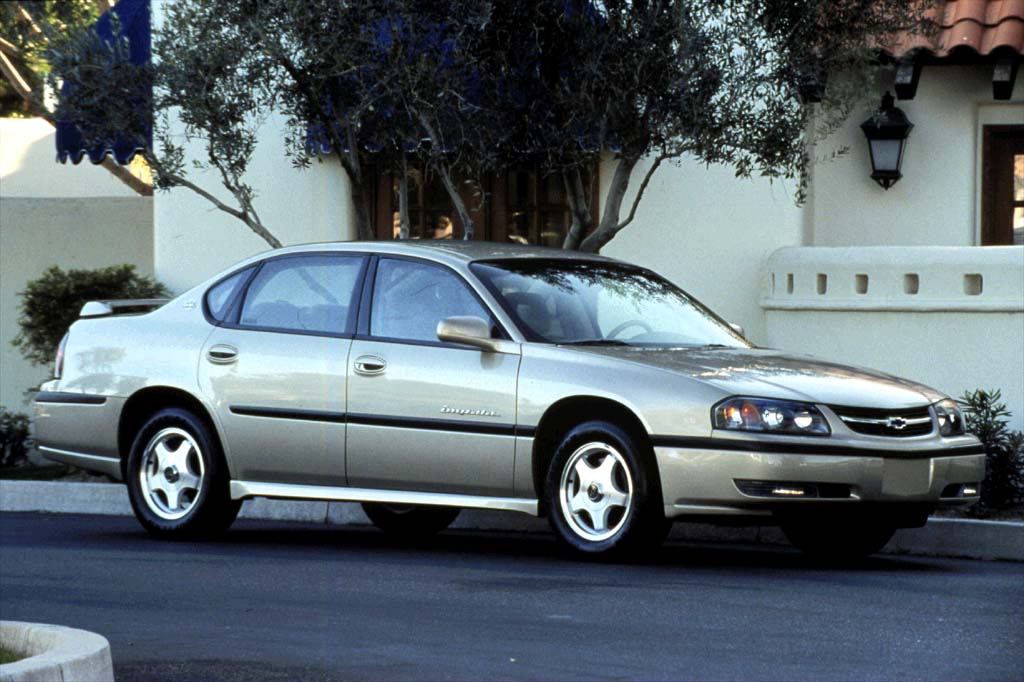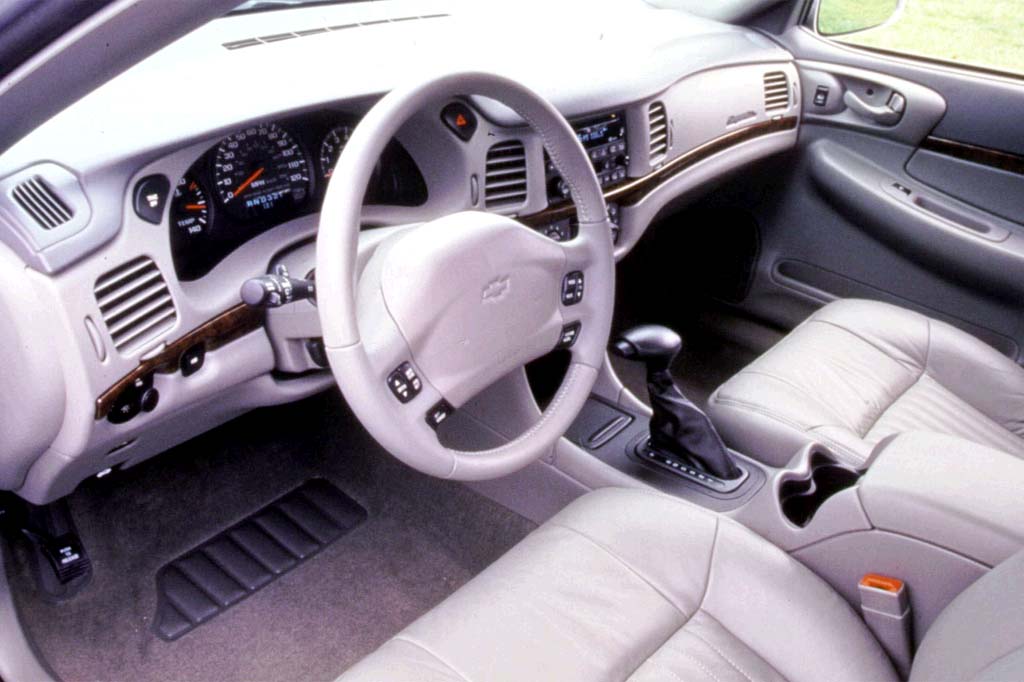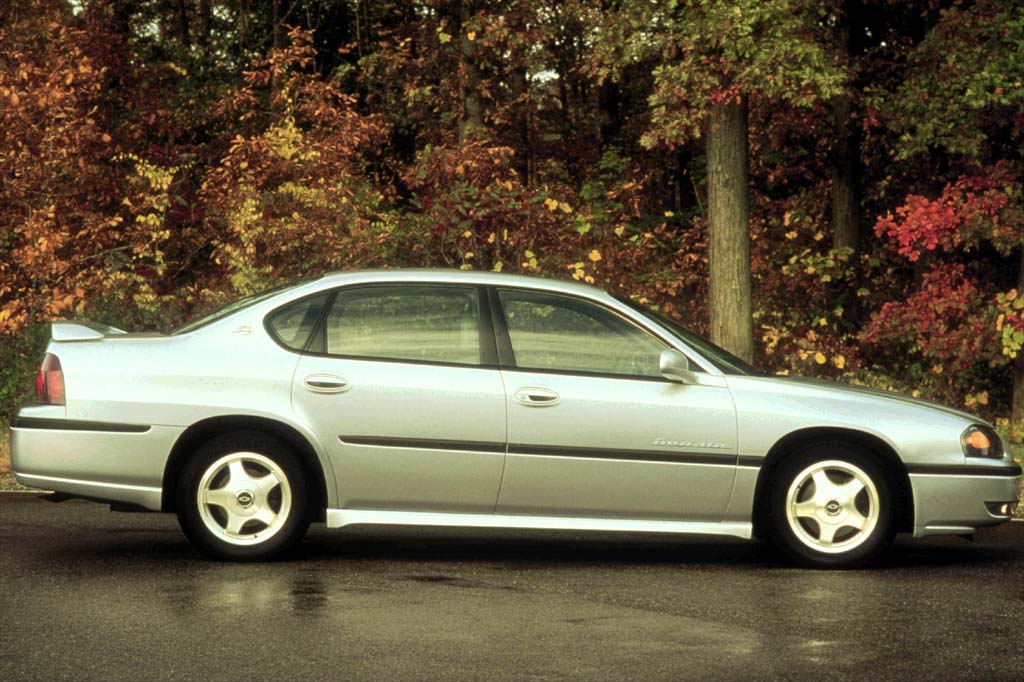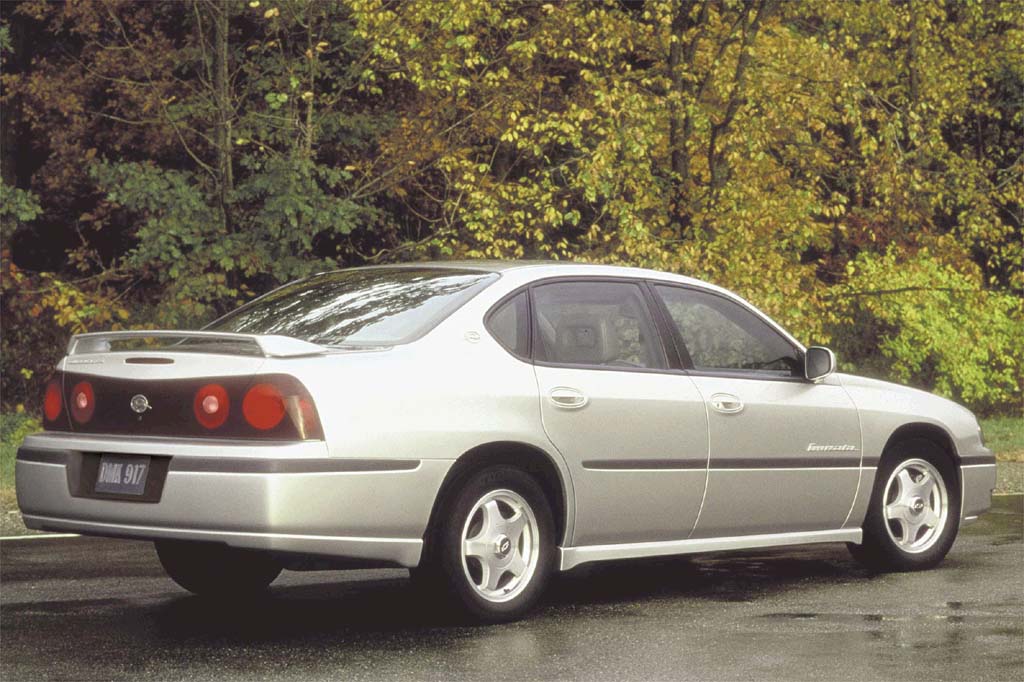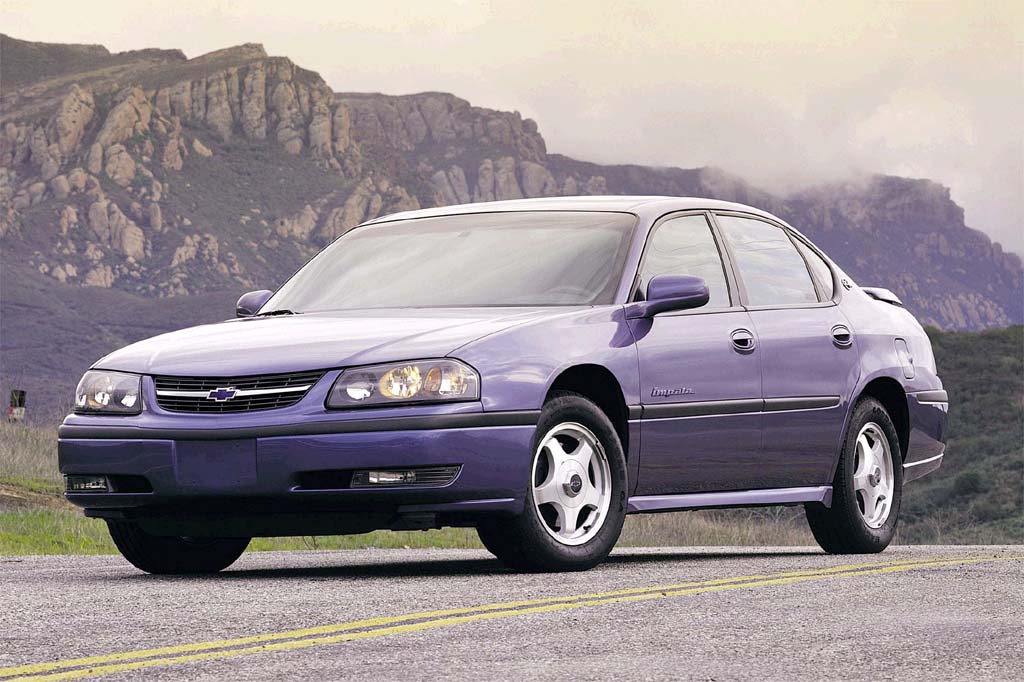| Standard Equipment |
| Base : 3.4-liter V6 engine, 4-speed automatic transmission, dual front airbags, 4-wheel disc brakes, daytime running lights, emergency inside trunk release, air conditioning w/manual dual-zone climate controls, interior air filter, power steering, tilt steering wheel, cloth upholstery, front split bench seat, cupholders, power mirrors, power windows, power door locks, remote keyless entry, AM/FM/cassette, digital clock, rear defogger, variable-intermittent wipers, map lights, visor mirrors, power remote decklid release, automatic headlights, theft-deterrent system, 225/60R16 tires, wheel covers |
| LS adds: 3.8-liter V6 engine, traction control, antilock 4-wheel disc brakes, tire-pressure monitor, cruise control, leather-wrapped steering wheel, front bucket seats, 6-way power driver seat w/lumbar adjustment, center console, tachometer, illuminated visor mirrors, rear spoiler, fog lights, Sport Touring Suspension, 225/60R16 touring tires, alloy wheels |
| SS adds: 3.8-liter supercharged V6 engine, leather upholstery, split folding rear seat, floormats, Performance Suspension, 235/55WR17 tires |
| Optional Equipment |
| Option Note: |
| Major Packages |
| Option |
Avail. |
Retail |
Dealer |
| 1SB Preferred Equipment Group |
Base |
$870 |
$774 |
| Cruise control, AM/FM/CD player, illuminated visor mirrors, cargo net, floormats. |
| 1SC Preferred Equipment Group |
Base |
2315 |
2060 |
| 1SB Preferred Equipment Group plus upgraded upholstery, 6-way power driver seat, leather-wrapped steering wheel w/radio controls, heated power mirrors, automatic day/night rearview mirror, alloy wheels. |
| 1SB Preferred Equipment Group |
LS |
780 |
694 |
| Steering-wheel radio controls, AM/FM/CD player, heated power mirrors, automatic day/night rearview mirror, cargo net, floormats. |
| 1SC Preferred Equipment Group |
LS |
1505 |
1339 |
| 1SB Preferred Equipment Group plus OnStar telematics system w/one-year service, trip computer, compass, outside-temperature indicator, universal garage-door opener, theft-deterrent system w/alarm. |
| 1SB Preferred Equipment Group |
SS |
700 |
623 |
| Cruise control, AM/FM/CD player, steering-wheel radio controls, heated power mirrors, automatic day/night rearview mirror, illuminated visor mirrors, cargo net. |
| 1SC Preferred Equipment Group |
SS |
1425 |
1268 |
| 1SB Preferred Equipment Group plus OnStar telematics system w/one-year service, trip computer, compass, outside-temperature indicator, universal garage-door opener, theft-deterrent system w/alarm. |
| Indy Limited Edition |
SS |
1295 |
1153 |
| Unique interior and exterior trim, badging, chrome alloy wheels. Requires 1SB or 1SC Preferred Equipment Group. |
| Sport Appearance Pkg. GFO |
Base |
750 |
668 |
| Rear spoiler, unique taillight treatment. |
| Sport Appearance Pkg. PDE |
Base |
2455 |
2185 |
| Mfr. Disc. |
|
1705 |
1517 |
| Sport Appearance Pkg. PDE |
Base w/1SB |
1860 |
1556 |
| Mfr. Disc. |
|
1110 |
988 |
| Sport Appearance Pkg. PDE |
Base w/1SC |
775 |
690 |
| Mfr. Disc. |
|
25 |
22 |
| Sport Appearance Pkg. GFO plus cruise control, upgraded upholstery, AM/FM/CD player, alloy wheels. |
| Sport Appearance Pkg. PDE w/bucket seats |
Base |
2505 |
2230 |
| Mfr. Disc. |
|
1755 |
1562 |
| Sport Appearance Pkg. PDE w/bucket seats |
Base w/1SB |
1910 |
1700 |
| Mfr. Disc. |
|
1160 |
1032 |
| Sport Appearance Pkg. PDE w/bucket seats |
Base w/1SC |
825 |
690 |
| Mfr. Disc. |
|
75 |
67 |
| Sport Appearance Pkg. PDE plus bucket seats. |
| Sport Appearance Pkg. WBP |
LS |
1495 |
1331 |
| Mfr. Disc. |
|
995 |
886 |
| Leather upholstery, unique interior and exterior trim, floormats, special alloy wheels. |
| Sport Cloth Trim |
Base |
735 |
654 |
| Sport Cloth Trim |
Base w/1SC |
0 |
0 |
| Sport Cloth Trim |
Base w/front bucket seats |
785 |
699 |
| 6-way power driver seat, additional cupholders, split folding rear seat, upgraded upholstery. |
| Leather Seat Trim |
Base, LS |
625 |
556 |
| Leather upholstery, 6-way power driver seat, additional cupholders, split folding rear seat. Base requires Preferred Equipment Group 1SC. |
| Comfort Seating Pkg. |
|
445 |
396 |
| Heated front seats, 6-way power passenger seat. Base, LS require Leather Seat Trim. Base requires 1SC Preferred Equipment Group. |
| Driver Information and Security Group |
|
295 |
263 |
| Trip computer, compass, outside-temperature indicator, universal garage-door opener, theft-deterrent system w/alarm. Base requires Preferred Equipment Group, antilock brakes. |
| Mirror Group |
|
165 |
146 |
| Heated power mirrors, automatic day/night rearview mirror. Base requires 1SB Preferred Equipment Group. |
| Indy Limited Edition |
SS |
1295 |
1153 |
| Unique interior and exterior trim, boost gauge, badging, chrome alloy wheels. Requires a Preferred Equipment Group. |
| Powertrain |
| Option |
Avail. |
Retail |
Dealer |
| 3.8-liter V6 engine |
Base |
1095 |
975 |
| Includes traction control, antilock brakes, tire-pressure monitor, Sport Touring Suspension. Requires 1SC Preferred Equipment Group, 225/60R16 touring tires. |
| Safety |
| Option |
Avail. |
Retail |
Dealer |
| Driver-side front side airbag |
|
350 |
312 |
| Base requires Preferred Equipment Group, Sport Cloth Trim. |
| Antilock brakes |
Base |
600 |
534 |
| Includes traction control, tire-pressure monitor. |
| Comfort & Convenience Features |
| Option |
Avail. |
Retail |
Dealer |
| OnStar telematics system |
|
695 |
619 |
| Includes one-year service. |
| Power sunroof |
|
900 |
801 |
| Includes illuminated visor mirrors. Requires Preferred Equipment Group. |
| Bucket seats |
Base |
50 |
45 |
| Includes Sport Cloth Trim. Requires Preferred Equipment Group 1SC. |
| 6-way power driver seat |
Base |
325 |
289 |
| AM/FM/CD player |
|
345 |
307 |
| Includes premium speakers. |
| AM/FM/cassette/CD player |
|
445 |
396 |
| AM/FM/cassette/CD player |
w/Preferred Equipment Group |
100 |
89 |
| Includes premium speakers. |
| Satellite radio |
|
325 |
289 |
| Requires monthly fee. |
| Steering-wheel radio controls |
Base |
195 |
173 |
| Steering-wheel radio controls |
LS, SS |
145 |
129 |
| Base includes leather-wrapped steering wheel. Base requires 1SB Preferred Equipment Group. |
| Cruise control |
Base |
250 |
223 |
| Cargo net |
|
45 |
40 |
| Floormats |
Base, LS |
80 |
71 |
| Appearance and Miscellaneous |
| Option |
Avail. |
Retail |
Dealer |
| Engine-block heater |
|
35 |
31 |
| Alloy wheels |
Base |
350 |
312 |
| Requires 1SB Preferred Equipment Group. |
| 225/60R16 touring tires |
Base |
45 |
40 |
| Requires 3.8-liter engine. |
